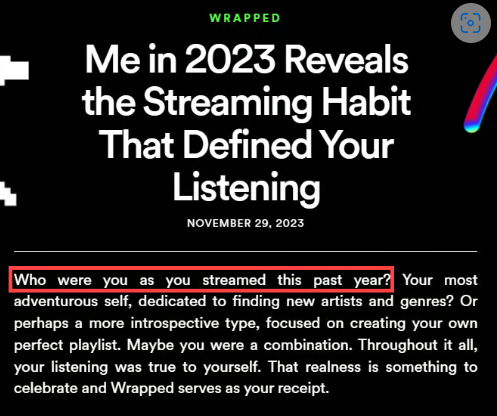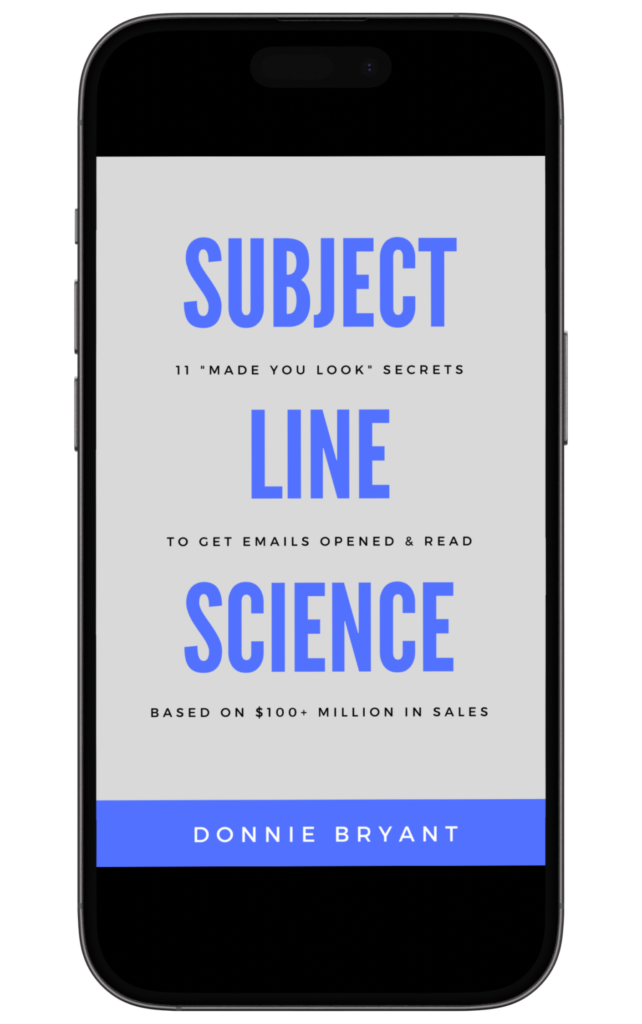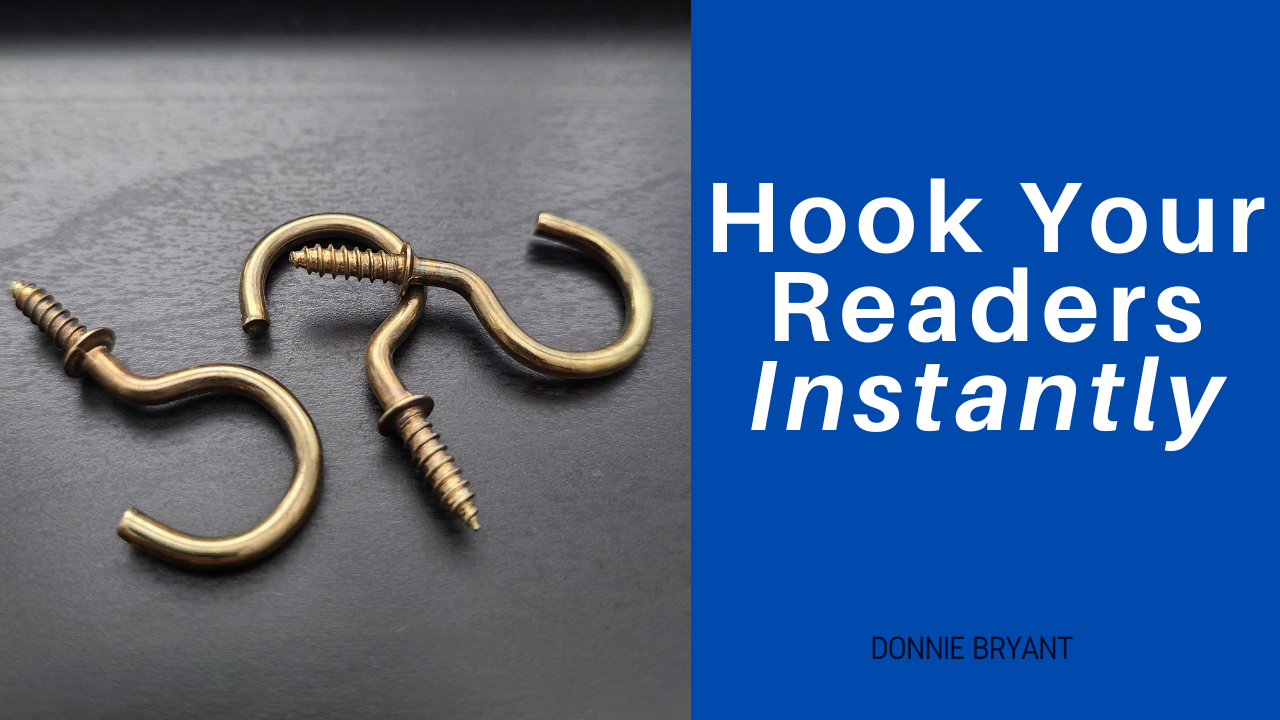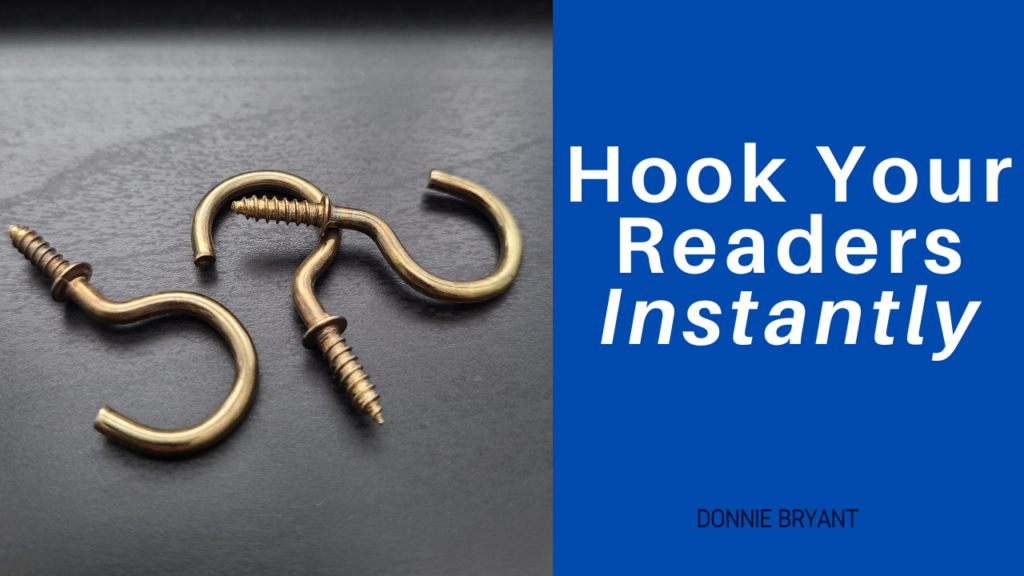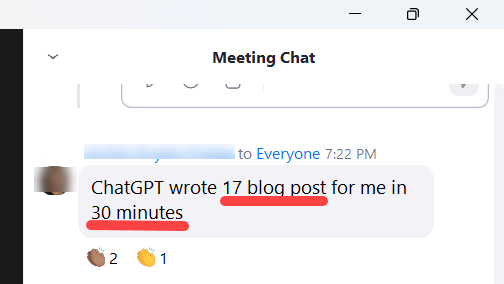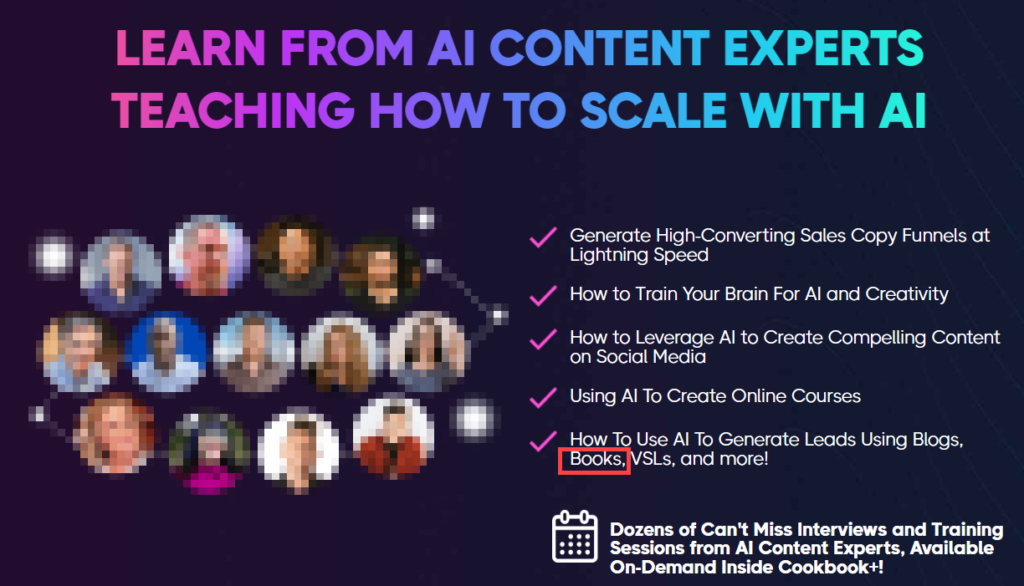I don’t know about you, but I’m not familiar with too many “offers” that get 50% conversion.
From any company.
Paid or free.
And then there’s Spotify Wrapped.
Fine, maybe it’s more of a feature than an “offer.”
But they package it up, offer it for a limited time and promote the heck out of it.
I haven’t seen this year’s numbers, but 51% of users checked out their Wrapped in 2022. About 14% of them also shared their results on social media.
The whole thing works pretty well. So well that YouTube and Apple have borrowed the idea. (Duolingo, too!)
What makes Wrapped so enticing?
It’s focused on the #1 most interesting topic on the planet: YOU.
We’re all the center of our own universes. So we’re incalculably interested in ourselves. How could we not be?
As an extension to that idea, we’re also fascinated by anything we believe can tell us more about ourselves. Help us understand ourselves better.
With Wrapped, we already know we listened to music all year. Spotify uncovers hidden patterns and tell you what your listening habits really say about you.
Over the years, they’ve diagnosed your music “personality” and assigned you to a city based on your music selection.
All ways of giving you ways to think about and categorize yourself in your own mind… share your (favorable) findings with the world… and compare/contrast/connect yourself with other people.
Genius.
People can get really attached to their categories. Myers-Briggs. Political parties. Astrological signs.
Even a simple dichotomy like entrepreneur vs. 9-5er.
And once they put themselves in a category, they can easily begin using it as the lens they see the world through.
This reality can produce profound influence.
Think about ways you can show your prospects and clients more about themselves. Help them understand themselves in a helpful new way.
And if you put them in categories you define – or give them a way to self-assess themselves into one…
You have an opportunity to shape how they see themselves, their optimal next steps, and more.
It’s a powerful position to be in. Use you power wisely.
P.S. Once people accept their categories, they see things differently. And they see different things.
There are certain ways to “trigger” those individuals with email subject lines.
I share more details about this in the Secret Handshake chapter of Subject Line Science, now available on Amazon Kindle and paperback.
This is one of the concepts David Garfinkel and I discussed on my recent appearance on The Copywriter Podcast. Enjoy!


